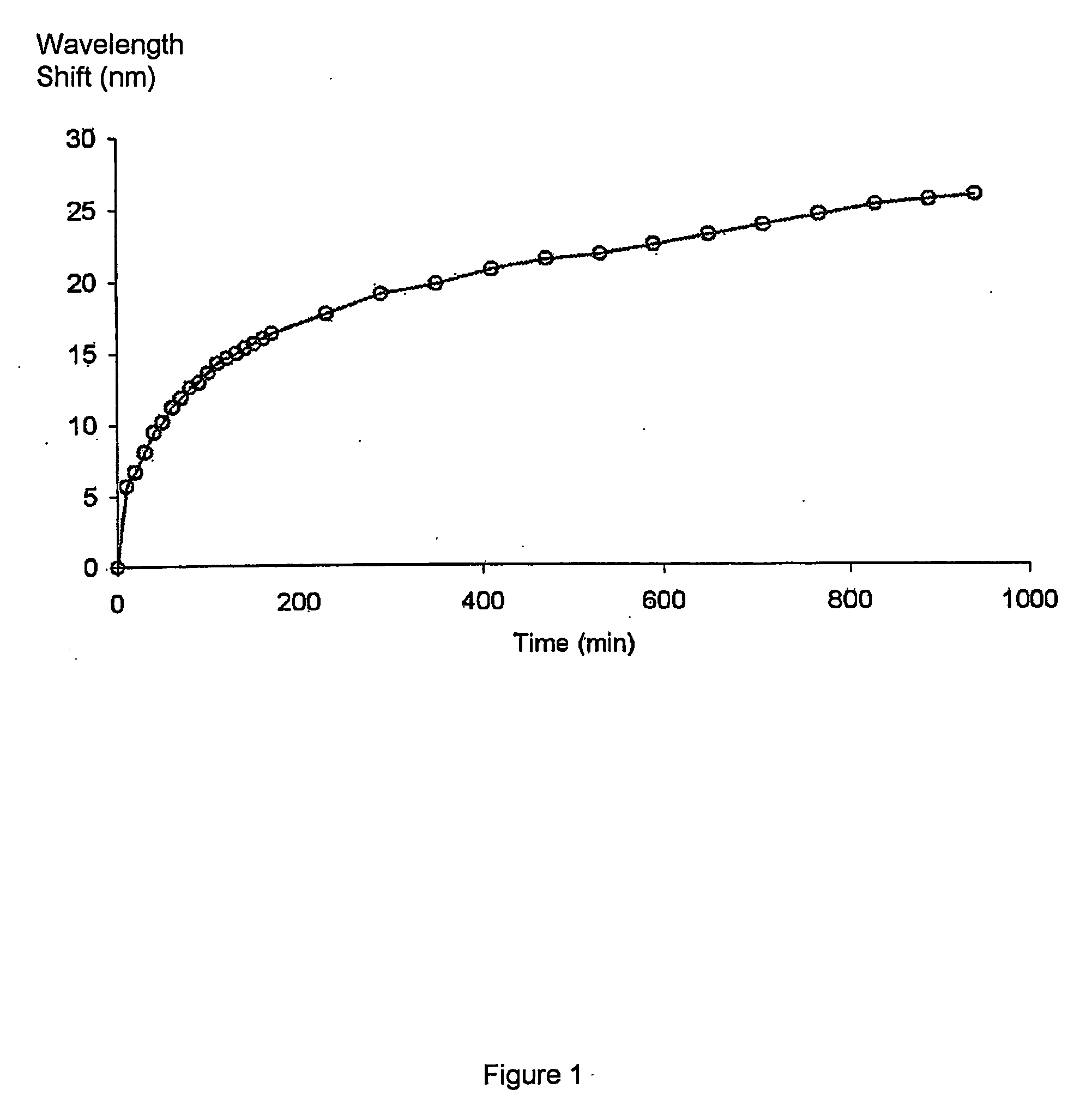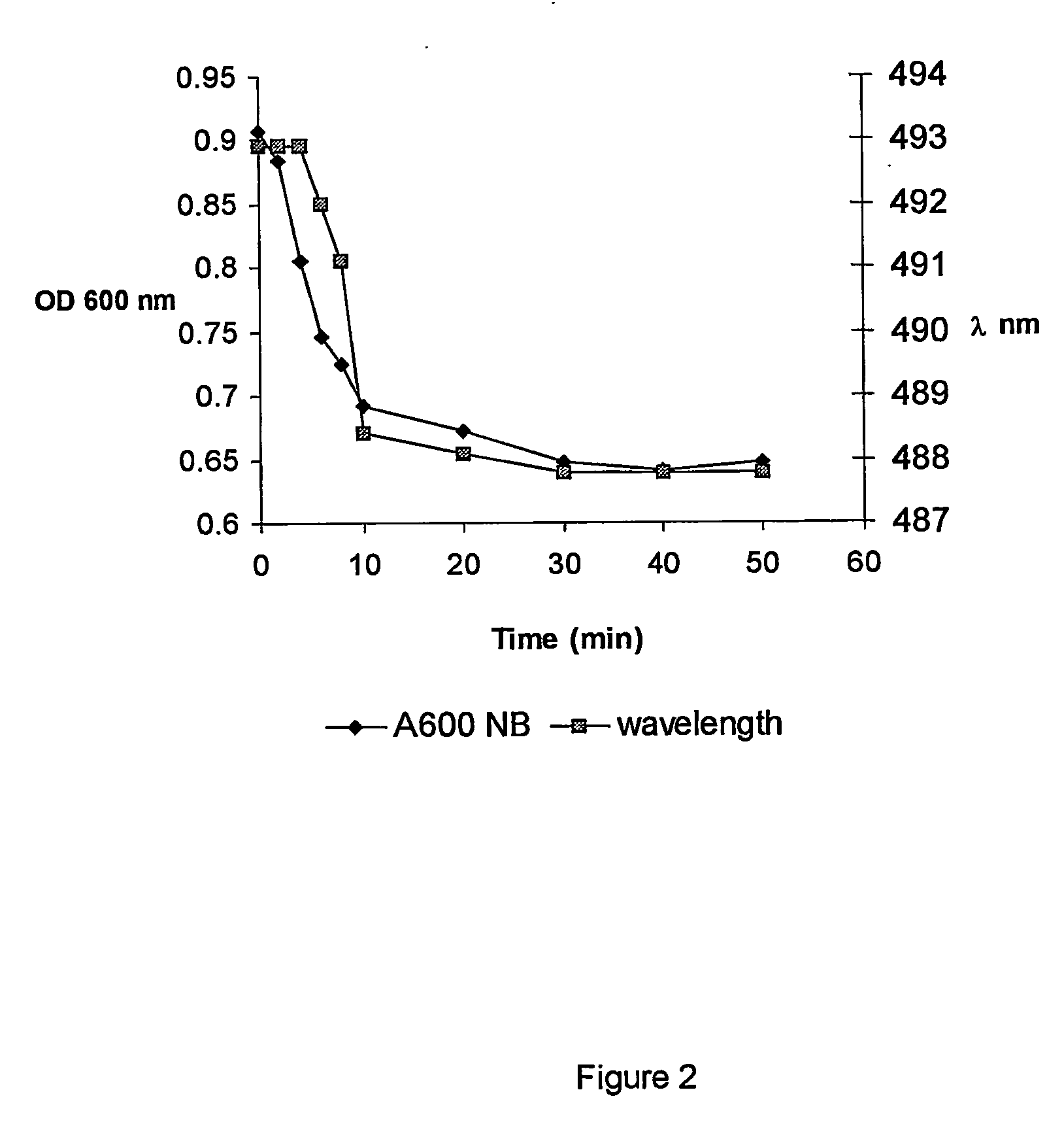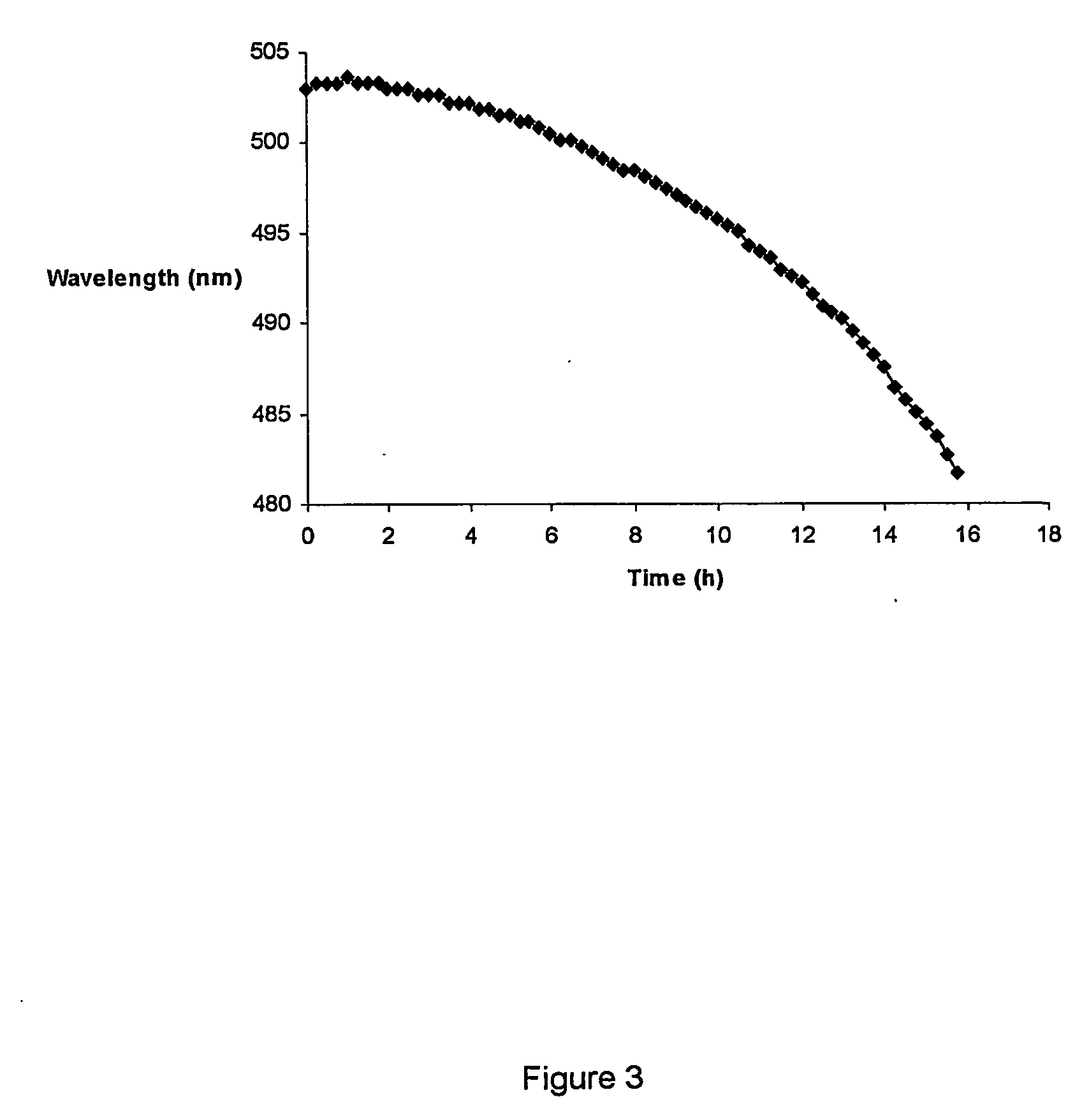Detection of microorganisms with holographic sensors
a technology of holographic sensor and microorganism, applied in the field of cell detection, can solve the problems of high cost, sensitive to environmental contamination, and inability to accurately identify a microbial pathogen, and achieve the effect of reducing the number of experiments
- Summary
- Abstract
- Description
- Claims
- Application Information
AI Technical Summary
Benefits of technology
Problems solved by technology
Method used
Image
Examples
example 1
[0025]Bacillus subtilis was detected in microbial culture. A metabolic product of the bacterium is protease, which degrades a gelatin-based holographic sensor. As the gelatin support medium degrades, it becomes increasingly spongy and expands.
[0026] Mid-exponential phase culture (in nutrient broth) was inoculated into a cuvette containing the hologram, and a reflection spectrometer used to measure the peak wavelength at 10 minute intervals over 15 hours at 30° C. A positive result for protease was shown by the peak wavelength undergoing a red-shift. FIG. 1 shows the red-shift of the peak wavelength of reflection over the 15 hour period.
example 2
[0027]Bacillus megaterium was detected in microbial culture. During germination, the bacterium releases Ca2+ (bound to dipicolinic acid). Ca2+ binds to a polyHEMA-MIDA holographic support medium, inducing a concomitant contraction of the polymer and a shift in replay wavelength.
[0028] A holographic sensor compound of 10 and 12 mole % MIDA in polyHEMA was equilibrated in nutrient broth. Bacillus megaterium spores were then added at a concentration of approximately 108 spores / ml. A reflection spectrometer was used to measure the peak wavelength at 1 minute intervals for 50 minutes at 25° C. Any change in the optical density of the sensor was also detected, a change in optical density being indicative of germination. Changes in the optical density of the germination matrix were also detected.
[0029]FIG. 2 is a graph of the germination response, showing the optical density (OD) and wavelength readings. The decreases in both OD and A are indicative of Ca2+-induced binding to of the holo...
example 3
[0030] Vegetative Bacillus megaterium was detected using a starch / acrylamide holographic sensor. The Bacillus genus is characterised by relatively high amylase production during growth; amylase degrades a starch-based holographic support medium.
[0031] A section of the sensor was equilibrated with 1800 μl of nutrient both at 30° C. 200 μl of vegetative Bacillus megaterium (cultured overnight) was then added (the cells were centrifuged and resuspended in fresh medium prior to addition to the cuvette, to remove any residual amylase). The peak wavelength of reflection of the sensor was recorded every 15 minutes for approximately 16 hours.
[0032] The results are shown in FIG. 3. Initially, the shift in wavelength was relatively small; however, the shift was more pronounced with time. This lag may be due to the presence of residual glucose in the holographic support medium.
PUM
| Property | Measurement | Unit |
|---|---|---|
| optical characteristic | aaaaa | aaaaa |
| magnetic field | aaaaa | aaaaa |
| volume | aaaaa | aaaaa |
Abstract
Description
Claims
Application Information
 Login to View More
Login to View More - R&D
- Intellectual Property
- Life Sciences
- Materials
- Tech Scout
- Unparalleled Data Quality
- Higher Quality Content
- 60% Fewer Hallucinations
Browse by: Latest US Patents, China's latest patents, Technical Efficacy Thesaurus, Application Domain, Technology Topic, Popular Technical Reports.
© 2025 PatSnap. All rights reserved.Legal|Privacy policy|Modern Slavery Act Transparency Statement|Sitemap|About US| Contact US: help@patsnap.com



